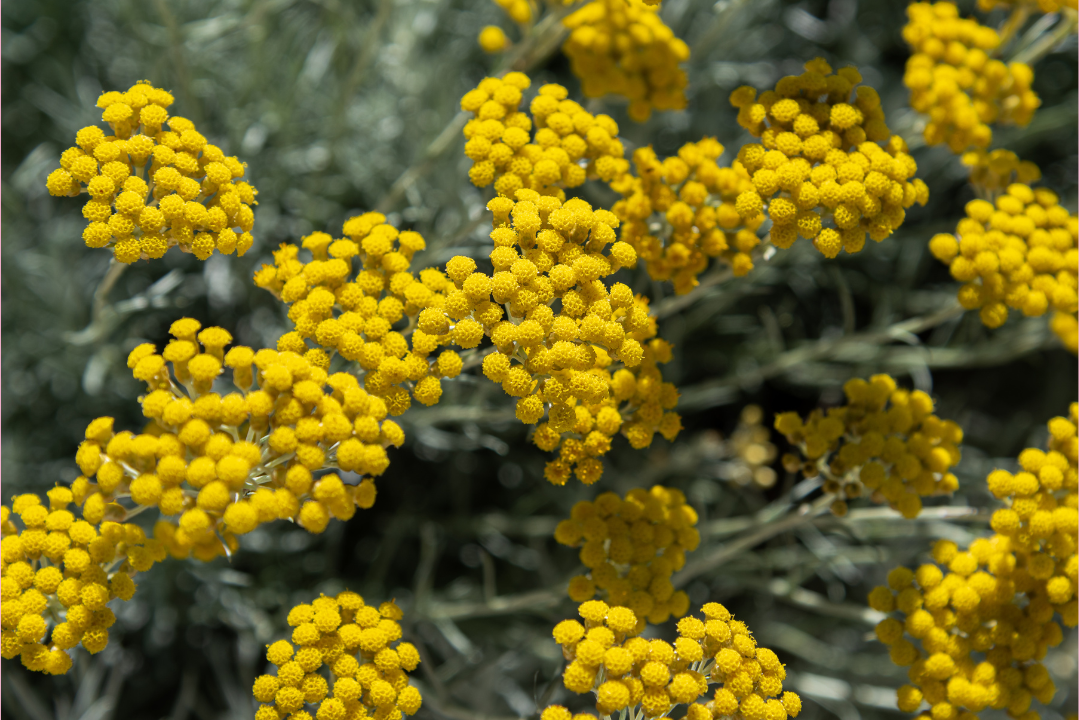When we think of cannabinoids, we usually think of hemp or cannabis, but did you know there are other plants out there that contain compounds similar to cannabinoids? These plants interact with your body’s endocannabinoid system (ECS) and can offer many of the same therapeutic benefits.
But here’s an important tip: to truly get the most out of these plants, it’s best to choose the freshest, least processed versions possible. For example, when it comes to raw cacao, opting for cacao seeds or nibs (instead of milk chocolate or highly processed cocoa) helps preserve its natural healing properties. Additives like milk or sugar can block the body’s ability to absorb all the goodness these plants offer.
So, are you ready to discover some amazing plants that work with your ECS to support your health and wellness? Let’s explore 10 incredible plant-based sources that could boost your well-being naturally.
1. Sunflower, Helichrysum
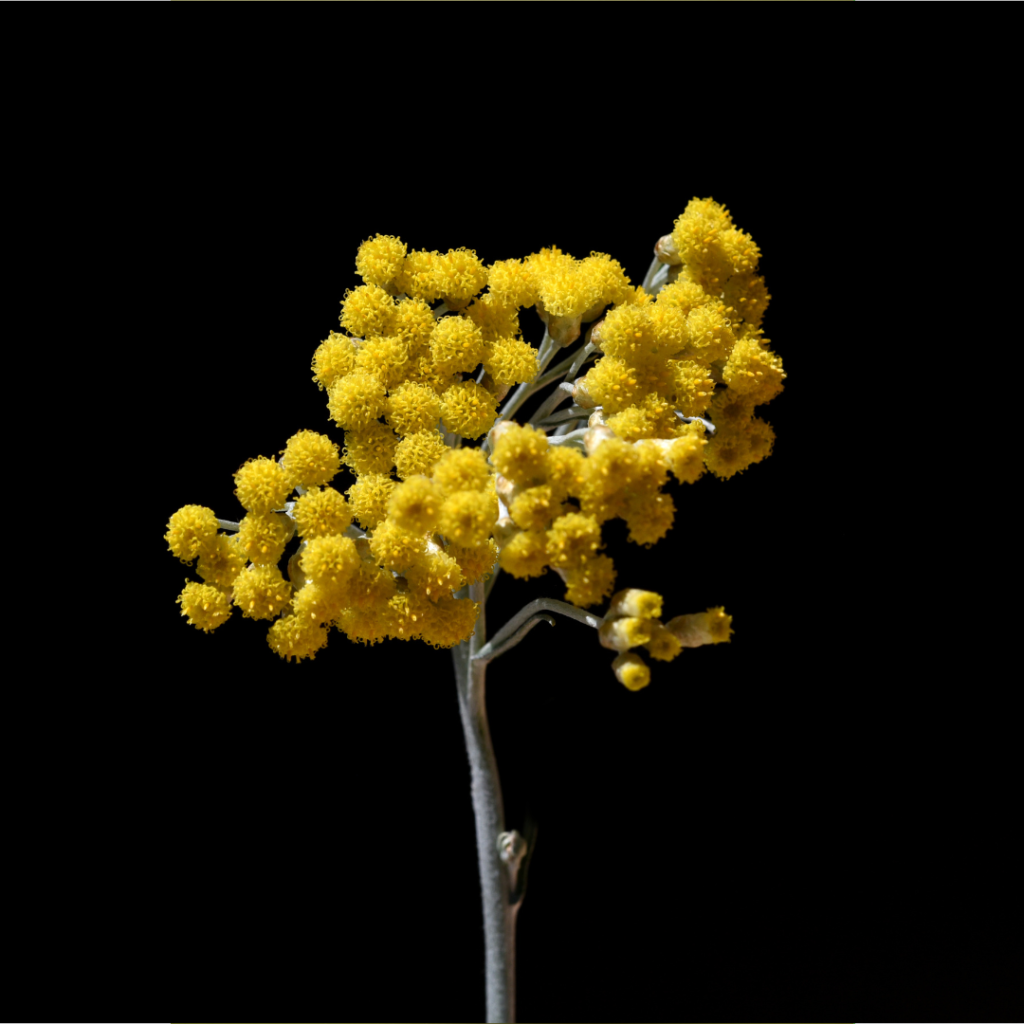
Not all sunflowers are created equal, but some types of sunflowers from South Africa, specifically those in the Helichrysum family, pack a surprising punch! These sunflowers contain a compound called CBG, or cannabigerol, which is a type of phytocannabinoid also found in hemp.
CBG is known for its potential therapeutic benefits, especially when it comes to supporting mood and helping with depression.
Now, here’s the catch: there’s still limited research on the psychotropic effects of Helichrysum CBG because strict plant laws in South Africa make studying this unique sunflower tricky outside the country. However, Giovanni Appendino, a researcher who discovered non-cannabis CBG, believes that the chemical makeup of these phytocannabinoids combined with the plant’s African ceremonial use suggests there might be some mind-altering potential – similar to cannabis.
While we don’t know everything yet, the potential for this flower to support mental wellness is certainly worth keeping an eye on!
2. Echinacea
Echinacea, also known as Echinacea purpurea or cornflower, is a popular herbal remedy that’s been used for centuries to help boost the immune system. But did you know this plant also works with your body’s endocannabinoid system?
Echinacea contains special compounds called N-alkylamides (NAAs) that act like cannabinoids – just without actually being cannabinoids. These compounds activate the CB2 receptors in your body, much like CBD does, which can help you feel calm and relaxed.
While Echinacea doesn’t contain true cannabinoids like THC, it’s still great for supporting your ECS and can help relieve stress-related symptoms like pain, fatigue, and inflammation. Whether you’re dealing with migraines, sore muscles, or just feeling run-down, Echinacea could be your go-to natural remedy.
And the best part? Since it doesn’t interact with the CB1 receptors (the ones that make you “high” like THC), you won’t experience any psychoactive effects. Instead, the N-alkylamides in Echinacea work with the CB2 receptors, providing a calming effect similar to CBD.
So, if you’re looking to boost your immune system, fight off colds, relieve arthritis pain, or even get some migraine relief, Echinacea might just be the plant you need in your wellness toolkit!
3. Black Truffle
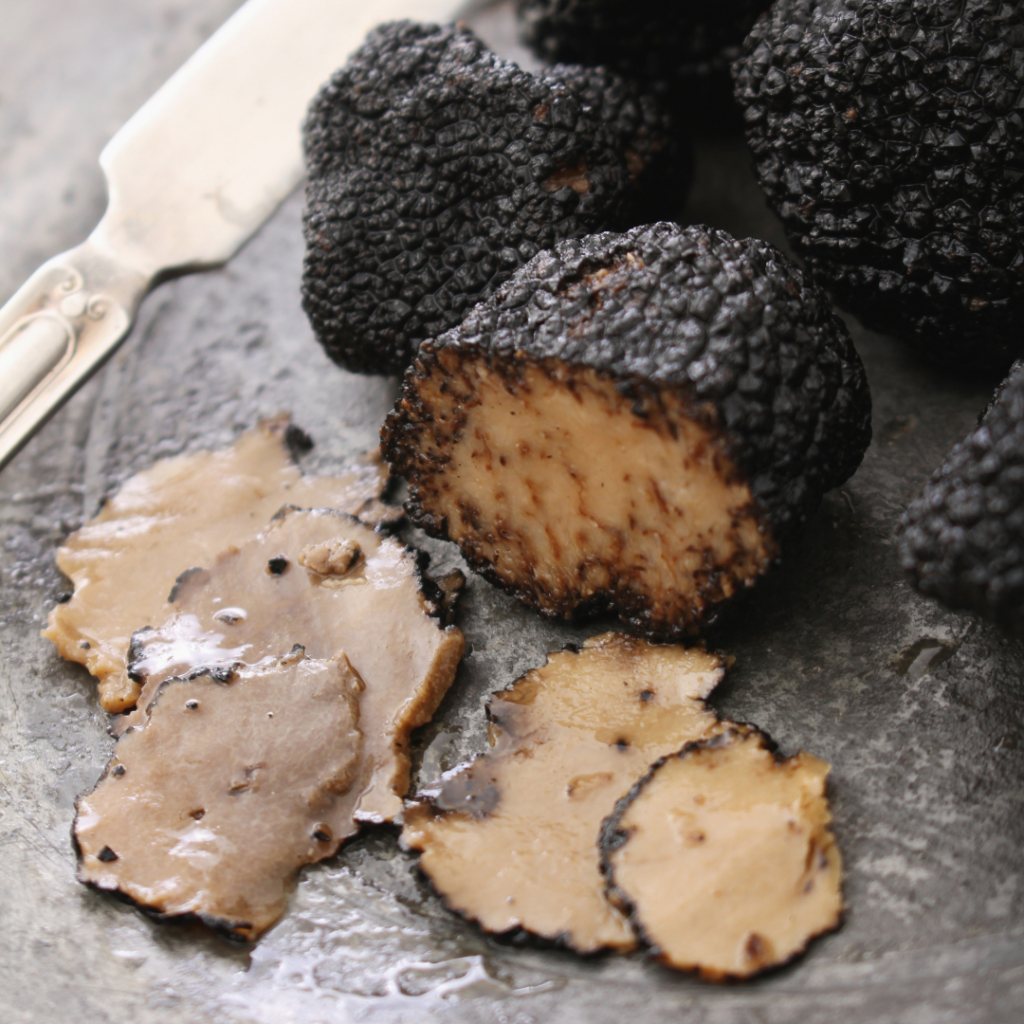
The black truffle, Tuber melanosporum, isn’t just a delicacy – it’s also a powerhouse of a compound called anandamide. This phytocannabinoid is naturally found in the human body and works similarly to cannabinoids from cannabis by binding to CB1 receptors.
The cannabis-like effects of anandamide in black truffles can help regulate appetite, improve mood, boost memory, and even change how we perceive pain. There’s also some research suggesting that it may have anti-cancer properties. It’s no wonder truffles are considered one of the most coveted (and expensive) ingredients in fine dining!
Interestingly, black truffles have been around for a long time. Research shows evidence of these cannabinoid-rich plants dating back 156 million years. That’s a whopping 146 million years older than the oldest known traces of cannabis! This makes truffles one of the most ancient sources of cannabinoids.
While studies on the specific therapeutic uses of anandamide in truffles are still ongoing (with current research happening in Italy), the evidence so far points to this rare, luxurious food offering more than just a flavor boost – it could also support health in ways similar to cannabis.
4. Black Pepper
Black pepper isn’t just for seasoning your food – it’s also a plant that contains compounds with effects similar to cannabinoids. One of these compounds is beta-caryophyllene, a terpene that gives some marijuana strains their signature spicy aroma. Along with another compound called guineensis, beta-caryophyllene can create a calming effect similar to CBD.
Known for its anti-inflammatory properties, black pepper can help ease pain, especially in conditions like arthritis and osteoporosis. Just like many other cannabinoid plants, black pepper’s soothing qualities can help reduce inflammation and bring relief to achy joints.
So next time you sprinkle some black pepper on your meal, remember – it’s not just boosting flavor; it might also be helping your body relax and feel better!
5. Cacao
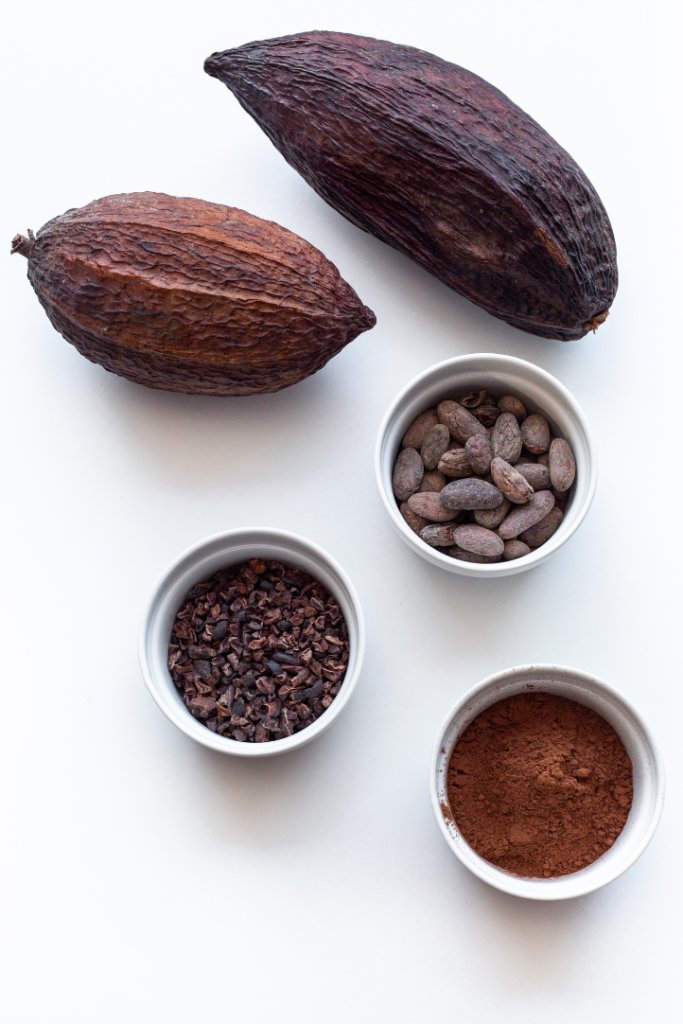
Cacao, scientifically known as Theobroma cacao (which means “food of the gods”), isn’t just delicious – it also contains compounds that work with your body’s endocannabinoid system. These include N-acylethanolamines (NAEs), such as theobromine, phenylethylamine, tryptophan, and anandamide, a cannabinoid naturally found in the brain.
Together, these compounds support a range of benefits. Cacao has been shown to help regulate mood, improve memory, control appetite, and even enhance pain perception. Plus, it may support fertility by balancing hormones in the body.
So, when you enjoy a piece of dark chocolate or sip on a cup of rich cacao, you’re not only indulging in a treat – you’re also giving your endocannabinoid system a natural boost!
6. Electric Daisy
Electric daisy (Acmella oleracea), a unique plant native to Brazil, is gaining attention for its powerful effects on pain and inflammation. It contains N-isobutylamides, compounds that interact with the body’s endocannabinoid system by blocking CB2 pain receptors. These receptors play a key role in regulating pain and inflammation, which means electric daisy can help alleviate discomfort in a way that’s similar to CBD.
This plant has traditionally been used to reduce pain, ease inflammation, and support overall joint and muscle health. Whether you’re dealing with chronic pain, soreness, or inflammation, electric daisy may offer a natural, effective solution.
In addition to its pain-relieving qualities, electric daisy’s targeted action on the CB2 receptors makes it a great option for those looking for a plant-based way to support their body’s natural healing processes. By working with the endocannabinoid system, electric daisy can help promote balance and comfort throughout the body.
While it may not be as widely known as some other cannabinoid-rich plants, electric daisy stands out for its ability to support pain management and inflammation reduction, making it a valuable addition to any wellness routine.
7. Japanese Liverwort

Japanese liverwort (Radula perrottetii) is a fascinating plant that contains perrottetinene, a compound similar to THC. This chemical interacts with the body’s endocannabinoid system by activating CB1 receptors, which play a role in regulating mood, pain, and other essential bodily functions.
Both the Japanese and New Zealand varieties of liverwort are traditionally used to support respiratory health, including treating bronchitis and other breathing issues. They’re also known for their benefits in supporting liver, bladder, and gallbladder health, making them a versatile addition to natural wellness routines.
The great thing about Japanese liverwort is that, unlike THC, the phytocannabinoids in liverwort don’t produce a psychoactive “high.” This means you can experience the plant’s therapeutic effects without any of the mental fuzziness associated with cannabis, making it a great option for those seeking relief from respiratory or digestive issues without the mind-altering effects of THC.
With its ability to support both the endocannabinoid system and various bodily functions, Japanese liverwort is a valuable plant to consider for natural, balanced wellness.
8. Kava
Kava (Piper methysticum), also known as kava-kava, is a tropical plant native to the South Pacific islands, including Tonga, Samoa, Fiji, and Vanuatu. It’s been used for centuries in these regions for its calming and euphoric effects, often as part of traditional ceremonies.
The active compounds in kava, such as kavalactones, alkaloids, and yangonin, interact with the CB1 receptors in the central endocannabinoid system. This helps produce a calming effect similar to THC, but without the psychoactive “high.” Instead, kava promotes a sense of relaxation, making it a natural option for reducing stress, anxiety, and even muscle tension.
Traditionally, kava is made into a bitter, yellow-green tea from the plant’s root. This tea is consumed ceremonially, and the ritual preparation adds to its calming experience.
Beyond its ceremonial use, kava is also highly regarded for its medicinal benefits. It’s commonly used to help with anxiety, depression, chronic pain, and muscle tension. People also turn to kava for its mood-lifting properties and as a natural remedy for managing addiction.
Kava is commercially available in various forms, including root powders, tinctures, capsules, and even instant kava. While it’s legal in the US, some countries, like Australia, Germany, and the UK, have restrictions or regulations on its use due to concerns about liver health when consumed in large quantities.
9. Rhododendron
Rhododendron, particularly species like Chinese rhododendron, is a plant known for its remarkable health benefits. This beautiful flowering plant contains folic acids that interact with the body’s endocannabinoid system, making it a valuable addition to natural wellness practices.
Rhododendron is celebrated for its antibacterial and adaptogenic properties, meaning it can help the body better respond to stress and restore balance. It’s also been shown to have potential in fighting off infections, including staph, and may even help in battling cancer cells.
In addition to these powerful benefits, rhododendron has been traditionally used to support respiratory health, including treating bronchitis. Its ability to help the body adapt to stress and fight illness makes it a useful plant for supporting overall wellness.
Whether you’re looking to boost your immune system, fight infections, or find an adaptogen to help with stress, rhododendron could be a great plant to explore for its health-promoting properties.

10. Tea Plants
Tea plants (Camellia sinensis), including green, black, and white teas, are not only refreshing but also have powerful compounds that interact with your body’s endocannabinoid system. These teas contain catechin flavonoids, which work similarly to cannabinoids, helping to promote balance and support various bodily functions.
One of the key benefits of tea is its ability to lower cholesterol and improve brain function. The catechins in tea help regulate fat metabolism and may reduce the risk of heart disease while also boosting cognitive function and memory. Whether you’re sipping a cup of green tea for its antioxidants or enjoying black tea for a mental lift, you’re also giving your ECS a natural boost.
With its ability to support both cardiovascular health and cognitive function, tea is more than just a comforting beverage – it’s a simple yet effective way to support overall wellness, all while benefiting from the plant’s interaction with the endocannabinoid system.
Why Hemp Is Still the Best Source for Cannabinoid Support
While there’s no doubt that the plants we’ve covered – like cacao, truffle, and black pepper – offer some impressive benefits for the endocannabinoid system (ECS), when it comes to overall cannabinoid support, hemp still reigns supreme. Here’s why:
- A Full Spectrum of Cannabinoids and Terpenes
Hemp is a unique plant because it contains a broad range of cannabinoids, including CBD, CBG, CBN, and small amounts of THC (within legal limits). These cannabinoids work together in what’s called the “entourage effect,” meaning they enhance each other’s benefits. Unlike some of the other plants we’ve discussed, which may focus on one or two compounds, hemp provides a comprehensive profile of cannabinoids and terpenes that work in harmony to support the ECS more effectively. - Supports Both CB1 and CB2 Receptors
Hemp interacts with both CB1 and CB2 receptors in the endocannabinoid system, making it an all-around ECS supporter. CB1 receptors are primarily involved in mood regulation, memory, and motor function, while CB2 receptors play a significant role in immune response and inflammation. Hemp’s cannabinoids help balance both of these, offering a wider range of therapeutic effects, from reducing anxiety to supporting joint health and even promoting better sleep. - Consistency and Quality
Hemp has been studied extensively, and its therapeutic benefits are well-documented. With the growth of the hemp industry, it’s also easier to find high-quality, standardized products that provide consistent doses of cannabinoids. Whether it’s in the form of tinctures, capsules, or topicals, you can count on hemp-derived products to deliver reliable benefits for your ECS. - Legality and Accessibility
One of the greatest advantages of hemp is its legal status. In many countries, including the United States, hemp is legal to grow, sell, and consume as long as the THC content stays below 0.3%. This makes hemp more widely accessible compared to some other cannabinoid-rich plants, which may be regulated or banned in certain areas. - Proven Risk-Free Therapeutic Benefits
While other plants like kava or rhododendron offer targeted benefits – such as reducing pain or improving respiratory health – hemp’s cannabinoids have been shown to have a broader, more well-rounded effect on health without any negative side effects. Hemp has been used to manage stress, reduce inflammation, alleviate chronic pain, promote sleep, support heart health, and even protect brain function. Its versatility makes it an ideal plant for supporting overall wellness.
In Conclusion: Hemp Leads the Way
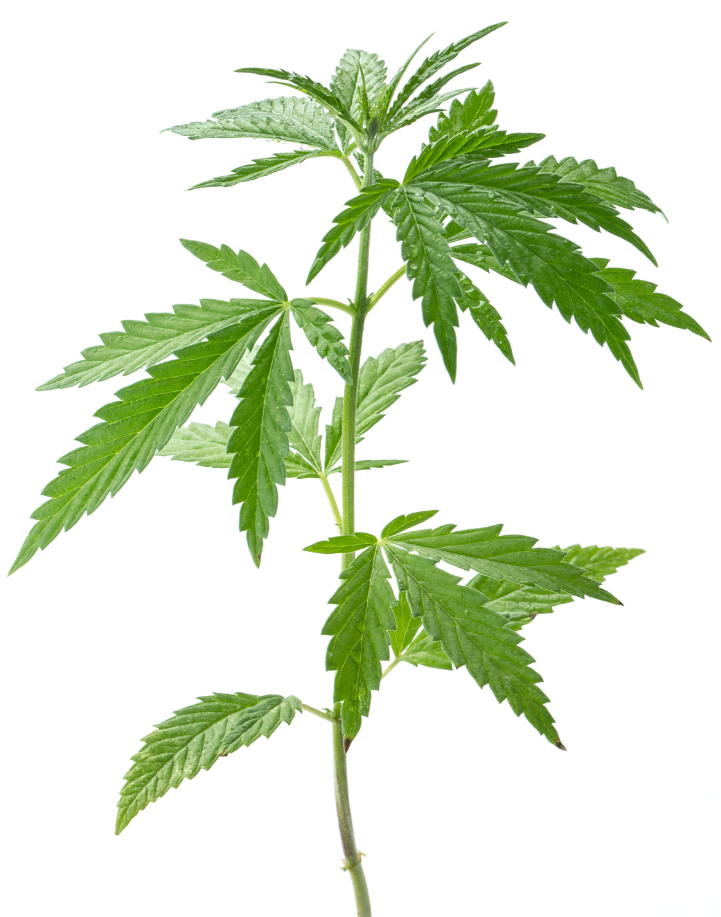
While many of the plants we’ve discussed offer exciting potential for cannabinoid-like effects, hemp remains the best source for consistent, full-spectrum ECS support. Its unique combination of cannabinoids, terpenes, and other compounds makes it the most effective option for keeping your endocannabinoid system balanced, no matter what wellness goal you’re aiming for.
So, while you can certainly benefit from the other plants mentioned here, when it comes to cannabinoid-rich plants for overall health and ECS regulation, hemp continues to be the gold standard.
That’s why, here at SomaLeaf, we offer a range of hemp-based products.
Whether you’re applying them topically or taking them orally, our hemp products are all designed to be safely and effectively used by your body.
